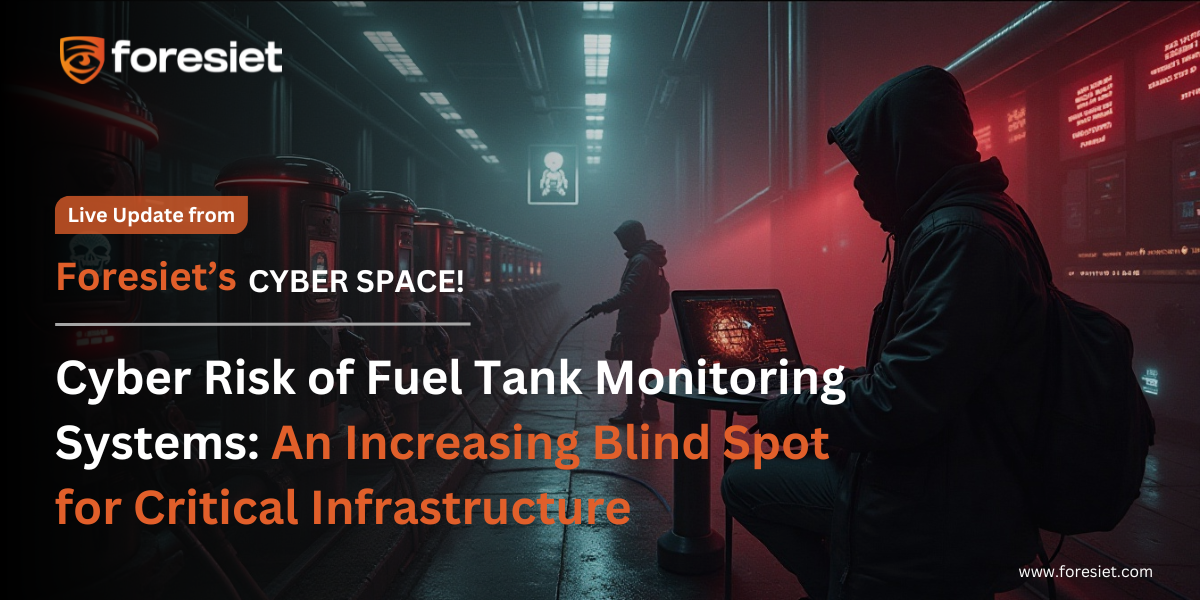Cyber Risk of Fuel Tank Monitoring Systems: An Increasing Blind Spot for Critical Infrastructure

Introduction
In a world that is becoming increasingly interconnected, critical infrastructure like fuel delivery systems no longer exists in a vacuum separated from cyber threats. Recent studies have found that thousands of automatic tank gauges (ATGs) installed at fuel stations and depots are made available online, open to malicious cyberattacks. The consequences are far-reaching beyond mere disruptions — they pose a potentially systemic risk to fuel supply chains and public infrastructure.
The Hidden Weakness in Fuel Infrastructure
Fueling stations and depots rely on Internet-accessible ATG systems to track important parameters such as fuel levels, temperatures, and leak detectors. But most of these devices are left open to the Internet, with default accounts or no security at all. Sites like Shodan make it appallingly simple for attackers to find and exploit these systems.
Pedro Umbelino, a lead research scientist at Bitsight, recently warned at the 2025 RSAC Conference that, rather than simply causing disruptions to business, attackers can do much worse — they can cause physical harm. By hacking relays or spoofing data, an ATG cyberattack could initiate false alarms, shut down pumps, or even irreparably damage the monitoring hardware and peripheral devices like ventilation or alarm systems.
From Disruption to Devastation: What's at Stake
The extent of damage is not confined to station-level outages. Umbelino makes comparisons to the 2021 Colonial Pipeline ransomware attack, which led to widespread fuel shortages even though attackers never directly accessed operational controls. Panic alone was sufficient to freeze supply chains.
In the same manner, small-scale assaults against ATGs have the potential to unleash a ripple effect — ranging from momentarily suspending gas pumps and backup generators to eroding faith in the country's fuel delivery systems. And once these machines are open for access with not enough protection, they constitute a ripe target for cyberthugs.
Study Illustrates Danger Grows Bigger
Despite years of threat advisories, the problem is growing. According to a study in 2022, an increase of 120% over 2015 levels in ATGs was exposed. And 2024 Bitsight research detected several severe vulnerabilities — such as SQL injection errors, privilege elevation bugs, and authentication bypasses — in next-generation fuel management systems.
Of concern were flaws such as CVE-2024-45066 and CVE-2024-43693, which were rated 10/10 in severity, allowing attackers full access to the device. These kinds of exploits threaten not just data integrity — they bring real-world consequences, including equipment burnout and environmental danger.
The Bigger Picture: A Fragmented Cybersecurity Landscape
Fuel infrastructure is only one aspect of a bigger challenge in the modern digital landscape. Numerous legacy systems, such as ATGs, operate using out-of-date firmware with no support for patching. Others are slower to react to changing threats due to the need for on-site updates.
This patchwork approach to security has opened blind spots in key industries. Without real-time digital footprint scanning or web-based risk assessment, organizations underestimate just how vulnerable they really are.
Brand Protection and Wider Digital Threats
Although industrial equipment such as ATGs might appear not to have anything to do with brand protection, their compromise can nonetheless drastically impair public trust and brand integrity, particularly for chains of gas stations and infrastructure providers.
It's here that companies gain from darknet monitoring and data tracking compromised — tools which enable early warning signs of coordinated cyber threat or insider danger. Being ahead of the curve also means monitoring vigilantly brand impersonation attempts and unauthorized digital belongings that pose as official infrastructure platforms.
Conclusion: Secure What You Can't See
As threats online become increasingly sophisticated, so must our responses to combat them. Fuel tank monitoring systems serve as a grim reminder that infrastructure of the utmost importance is no longer beyond the grasp of cyber attackers. A single exposed port or default password can bring an entire network into chaos.
Organizations must take an active approach — blending technical hardening, vulnerability scans, and monitoring of breached data and brand abuse — to counteract ever-morphing cyber threats. For because in this highly interconnected age, the least attended-to system can turn out to be the next massive attack channel.
About us!
Foresiet is the pioneering force in digital security solutions, offering the first integrated Digital Risk Protection SaaS platform. With 24x7x365 dark web monitoring and proactive threat intelligence, Foresiet safeguards against data breaches and intellectual property theft. Our robust suite includes brand protection, takedown services, and supply chain assessment, enhancing your organization's defense mechanisms. Attack surface management is a key component of our approach, ensuring comprehensive protection across all vulnerable points. Compliance is assured through adherence to ISO27001, NIST, GDPR, PCI, SOX, HIPAA, SAMA, CITC, and Third Party regulations. Additionally, our advanced antiphishing shield provides unparalleled protection against malicious emails. Trust Foresiet to empower your organization to navigate the digital landscape securely and confidently.
Protect your brand, reputation, data, and systems with Foresiet's Integrated Digital Risk Platform. 24/7/365 threat monitoring for total peace of mind.


